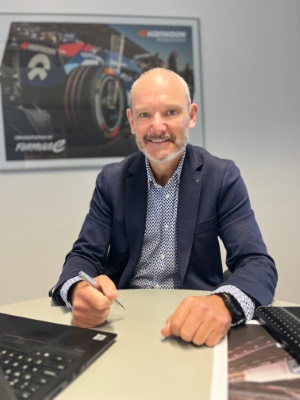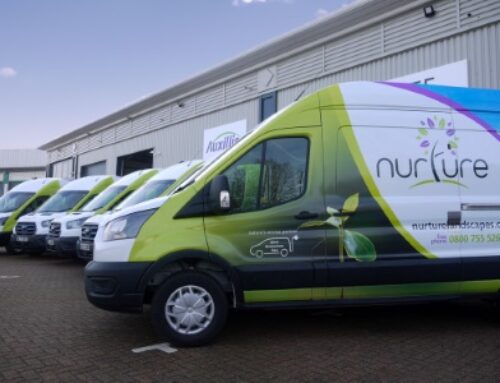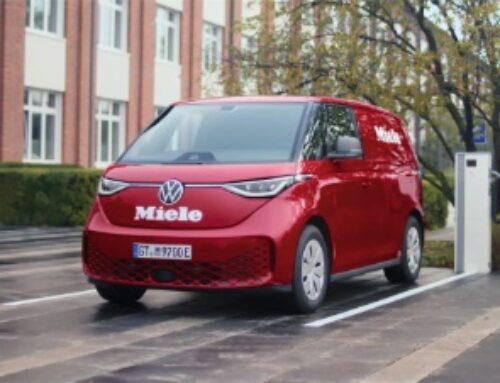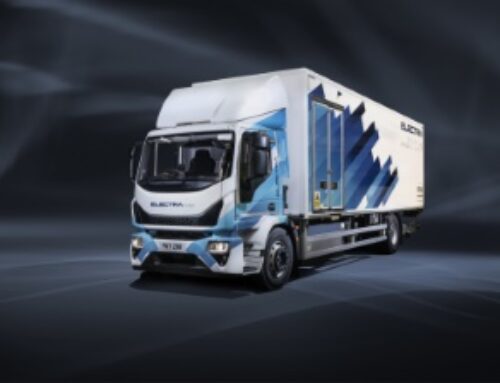The role of tyres on the road to decarbonisation
Tyre specialist Hankook has offered its perspective on the impact of the shift to electric vehicles on the commercial tyre sector.
According to Guy Heywood, vice president, TBR sales, marketing and strategy at Hankook, while battery electric vehicles seem set to become the dominant technology for CV operators, slow adoption means that EVs are unlikely to fully replace internal combustion engine (ICE) vehicles until long after the current EU phase-out target of 2040.
“Tyre makers are for sure focusing on EV vehicles to support the drive towards decarbonisation, however we cannot solely focus on this if we are to practically affect the carbon emissions from the total EU commercial vehicle parc,” said Guy.
“This means premium makers like Hankook are working on ICE and EV tyres simultaneously to have an effect across the whole market.
“For EV tyres, it is the view of Hankook that the vehicles are significantly different from their ICE predecessors. So different that we are designing EV specific car, van and commercial vehicle tyres, which is a diversion from the strategies of many of the other premium makers in the market.
“Today most of the EV vehicles produced and sold in the EU are fitted with ICE tyres with adaptations to cope with the heavier weights of EV vehicles (EV Ready, EV Capable, EV Usable tyres). In our view we do not want to compromise on the overall performance of the tyre, so we are designing and deploying EV-specific products in car and SUV under the Hankook iOn brand and truck and bus under the Hankook e-Smart brand.”
Guy went on to explain why tyre requirements differ for electric vehicles: they are around 20 per cent heavier than ICE due to battery weight, while electric motors and lack of a transmission means up to 10 times the rate of torque and acceleration. The tyre industry is finding normal tyres are wearing 20 per cent or more faster when fitted to EVs, he says.
The weight and acceleration mean the momentum, cornering forces and braking forces are higher than for diesel vehicles, he adds, while diesel engines are replaced by electric motors which are close to silent in operation, so noise from tyres (TBR tyres are noisier than car due to the larger air chamber) is easily heard in the cab.
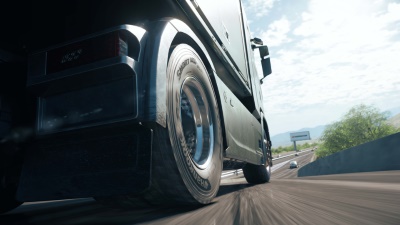 “Battery distance anxiety is a real barrier to fleets buying EV trucks now, so tyre makers need to deliver tyres with ultra-low tyre rolling resistance – 30 per cent of the fuel or battery power used in a truck is consumed to overcome tyre rolling resistance so a 10 per cent gain can mean three per cent less fuel or three per cent more distance for the same charge,” Guy continued.
“Battery distance anxiety is a real barrier to fleets buying EV trucks now, so tyre makers need to deliver tyres with ultra-low tyre rolling resistance – 30 per cent of the fuel or battery power used in a truck is consumed to overcome tyre rolling resistance so a 10 per cent gain can mean three per cent less fuel or three per cent more distance for the same charge,” Guy continued.
“Mileage, wet grip, traction, etc needs also to be maintained at a premium level for EV vehicles.
“In the past tyre designers would focus on a balance of performance between three criteria – mileage, grip and fuel efficiency (rolling resistance) and it was impossible to improve one without negatively affecting the other. For example, you can reduce rolling resistance with new compounds but it would mean loss of tyre mileage and grip.
“[With electric vehicles] we are now not looking for three performance criteria, but six, seven or eight – and all need to be higher than we see in conventional tyres.”
The good news, says Guy, is that as vehicle technology advances rapidly, tyre technology too is seeing rapid development – and as a result, Hankook says it can now deliver tyres with not the usual 2-3 per cent gain in performance, but 20 per cent or more, and at the same time gains in several performance criteria.
Among the key tyre technologies being deployed is materials science, he adds.
“Hankook have a target of 100 per cent sustainable materials in tyres by 2050 and today the industry average is 35 per cent. This means we need to replace 65 per cent of the materials in our tyres in the next 26 years. It sounds like a long time away, but the reality is the materials we need do not yet exist. We are seeing new materials arriving each day and so we are now using new sustainable materials (recycled – carbon, steel, rubbers etc.) These new materials can deliver better performance than the non-sustainable materials used previously.”
In addition, Hankook is now using AI and supercomputing technologies to digitally design optimised tyres and materials compounds.
“We can digitally design a tyre, make a digital prototype and test the digital tyre on a digital truck on a digital road. This means we can get results in minutes which used to take months or years (the normal process was to design, then make a real rubber prototype tyre and test it on truck on a test track for six months to see the effects).”
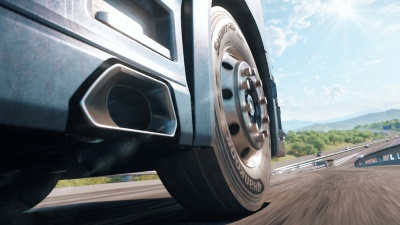 This means designs can be optimised much faster, and AI is beginning to support designers with suggestions.
This means designs can be optimised much faster, and AI is beginning to support designers with suggestions.
Another key technology is 3D additive manufacturing: all of the new generation of Hankook premium truck and bus tyres have 3D printed tread moulds, says Guy, and 90 per cent of the company’s sales in Europe in 2024 will be new-generation 3D tyres.
“With 3D moulds we can hide tread holes, grooves and gripping surfaces below the original tread pattern,” said Guy.
“This means we can have air and water cooling inside of the tread block which means the tyres run cooler in temperature and this give more mileage and lower tyre rolling resistance. When the tyre is two-thirds worn, these hidden holes and grooves are revealed meaning the tyre has new gripping surfaces and also rain evacuation channels, so the dry and wet grip performance of the tyre is maintained from the first to last millimetre of tread wear.
“Stopping distances have been tested to be up to 6m shorter than other premium competitor tyres when the tyres are worn and the road is in the wet condition (6m is around two car lengths of extra braking distance for some competitors’ tyres).
“So by combining these technologies Hankook have been able to significantly increase mileage, wet grip, durability, fuel efficiency (Diesel tyres) and battery range at the same time. They are game changing technologies which make benchmark performance a possibility for us.
“We will launch the first of our EV range of products under the brand Hankook e-Smart from July of this year (275/70 R22.5 e-Smart City) which will be focused on the urban bus market… The tyre prototype will be on display at the Road Transport Expo event in June of this year.”


